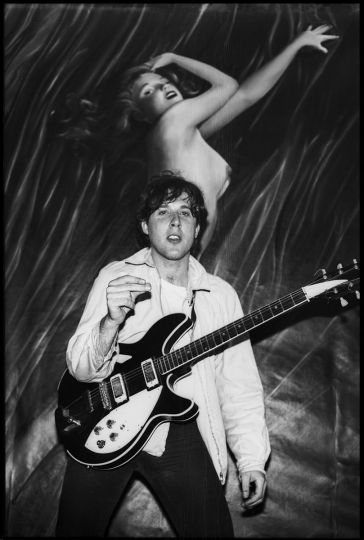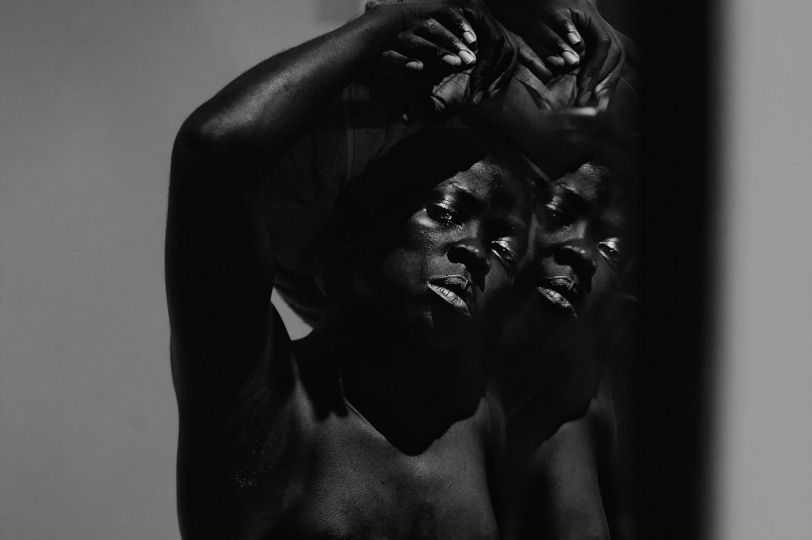Harrowdown Hill is a new publication by British photographer John Spinks, featuring landscape photographs made over the period of a year. Spinks re-deploys the conventions of English landscape painting to produce a series of photographs that at first appear to be an atmospheric, often melancholic visual document of the English countryside. Beneath the surface however is a complex story of competing political narratives set against the backdrop of the war in Iraq.
Harrowdown Hill is the site where at approximately 9.20am on the 18th of July 2003 the body of Dr David Kelly was discovered in woodland, not far from the Oxfordshire village of Longworth. A public enquiry found that he had died by suicide. From 1991 up until the time of his death, Dr Kelly had been a lead member of the scientific teams tasked by the United Nations with monitoring and removing Iraq’s chemical and biological weapons capability. His death occurred shortly after he was revealed to have been the source of a BBC story which questioned the Blair government’s case for going to war in Iraq. The events leading up to and following his death are now often considered to mark a turning point in British politics and are at the heart of Spinks’ book.
Spinks’ interest in the Kelly story began very simply through reading contemporary news reports. Initially understanding the story as an example of institutional bullying, what emerged from his subsequent in-depth research was a more nuanced and detailed picture of two institutions engaged in a struggle to control competing narratives; how that struggle played out; and how events developed a momentum of their own that became impossible to control.
Starting work on Harrowdown Hill in 2008, the pictures included in the book were made between July 2013 and June 2014. This eight-year gap between finishing the photography and making the book was mainly due to Spinks’ ongoing process of reflection on the work and some of the difficult questions it poses. He felt that it would have been too easy and convenient to disregard or ‘forget’ about the sensitivities of the Kelly family. It was only at the end of 2022, after speaking with a friend and colleague of Kelly’s, who worked alongside him at the UN, that Spinks felt it was finally possible to proceed with publication. The book itself consists of 103 images and contains almost no text aside from a brief explanatory note by Spinks in the final few pages, the purpose of which is to guide the audience without wishing to provide a definitive reading of the work.
This final sequence of images were made by Spinks once or sometimes twice a month for the period of a year. Each visit would begin with a two hour journey from his home in London to the Oxfordshire village of Longworth. On his walk from the village up to, and past the hill, Spinks photographed the same eight specific locations and remade the same photograph on each trip as a way of describing the passing of the seasons. Sometimes during each visit, as a way of recording changes in the light or weather, he would make more than one picture of the same location. These repeated pictures might be made a few seconds, minutes, or hours apart and, to Spinks, are a way of thinking about how photography works in relation to events and states of affairs but also photography’s relationship to time. Through differences in light, the weather, and the passing seasons recorded in each picture, the viewer is able to ‘move’ backwards and forwards in time. Using multiple repetitions, Spinks organises his photographs so that the viewer is lulled, then brought up sharp, and then lulled again by the rhythms within the sequence of pictures.
As Spinks explains, “When I was thinking about the [Dr David] Kelly case, this seemed like an interesting idea because he is, of course, intimately connected with Harrowdown Hill, it’s a landscape that he would walk, and, I started thinking, ‘Well what if I start photographing Harrowdown Hill?’ It’s not enough to photograph it once, you’ve got to go and really try to think about what that place means. I started thinking about the whole notion of nationhood and conflict, and part of it seems to come back to the land. There is still a fierce attachment to a very particular notion of England. There’s this connection with the soil.”
Photography has often been used to record sites of significance, places where things have happened in the near or distant past. It is a long tradition stretching back as far as Roger Fenton’s 1855 photographs of battlefields in the Crimean War – the first historic attempt to portray a war campaign. More recently Joel Sternfeld’s On This Site commemorates sites of social, ecological and civil struggles. Frequently however, this way of working relies upon an individual image resulting from a single visit to a site. Given the complexity of the Kelly story, Spinks wanted to examine Harrowdown Hill and the meanings it had accrued more rigorously. In developing a process of repeating images during repeated visits his intention was that the pictures would start to resonate in such a way as to deepen and intensify the experience of viewing the work.
In Harrowdown Hill Spinks’ consciously ambiguous images continue in the photographic tradition whereby seemingly innocuous landscapes mark the sites of pivotal historical events. The power of place and its connections to people and events is at the heart of Spinks’ practice as a photographer as indeed is the notion of Englishness and its shifting meanings.
About John Spinks
John Spinks (b.1970, UK) has been an independent photographer for over 20 years, working both commercially and on long term bodies of work. In this time he has received numerous national and international commissions for editorial and commercial work and has appeared in titles including The New York Times; Vogue; The Wall Street Journal; The Guardian; Le Monde; Saturday Telegraph; L’Officiel; and The Face.
His art practice is mainly concerned with the use of photographic picture making as a mode of sustained, focused investigation of place. Spinks’ work seeks to explore the politics and power of place, believing that photography is uniquely able to fulfil the dual function of revealing personal histories at the same time as creating metaphors for contemporary states of affairs. www.johnspinks.co
To mark the publication of John Spinks’ Harrowdown Hill there will be a book launch at The Photographers’ Gallery Bookshop, London on Thursday 25 May 2023 from 18:00 – 20:30.
John Spinks : Harrowdown Hill
co-published by Sete Edizioni and Lugo Land
First edition 500 copies
Book design and layout Filippo Nostri
Hardcover
Pages 144
Dimensions 285 x 235mm
ISBN 978-88-944491-8-1
Price £40.00
https://www.edizionisete.org/libri/
















